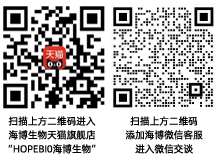IDENTIFICATION ANDCONTROLOFRESIDUALSOLVENTS
The test procedures described in this general method may
be used:
i. for the identification of the majority of Class 1 and Class
2residualsolventsinanactive substance, excipient or
medicinal product when the residual solvents are unknown;
ii. as a limit test for Class 1 and Class 2 solvents when present
in an active substance, excipient or medicinal product ;
iii. for the quantification of Class 2 solvents when the
limits are greater than 1000 ppm (0.1 per cent) or for the
quantification of Class 3 solvents when required.
Class 1, Class 2 and Class 3 residual solvents are listed in
general chapter 5.4. Residual solvents.
Three diluents are described for sample preparation and
the conditions to be applied for head-space injection of
the gaseous sample onto the chromatographic system.
Two chromatographic systems are prescribed but System
A is preferred whilst System B is employed normally for
confirmation of identity. The choice of sample preparation
procedure depends on the solubility of the substance to be
examined and in certain cases the residual solvents to be
controlled.
The following residual solvents are not readily detected by
the head-space injection conditions described: formamide,
2-ethoxyethanol, 2-methoxyethanol, ethylene glycol,
N-methylpyrrolidone and sulfolane. Other appropriate
procedures should be employed for the control of these
residual solvents.
When the test procedure is applied quantitatively to control
residual solvents in a substance, then it must be validated.
PROCEDURE
Examine by gas chromatography with static head-space
injection (2.2.28).
Sample preparation 1. This is intended for the control of
residual solvents in water-soluble substances.
Sample solution (1).Dissolve0.200gofthesubstancetobe
examined in water R and dilute to 20.0 ml with the same
solvent.
Sample preparation 2. This is intended for the control of
residual solvents in water-insoluble substances.
Sample solution (2).Dissolve0.200gofthesubstancetobe
examined in N,N-dimethylformamide R (DMF) and dilute to
20.0 ml with the same solvent.
Sample preparation 3. This is intended for the control of
N,N-dimethylacetamide and/or N,N-dimethylformamide,
when it is known or suspected that one or both of these
substances are present in the substance to be examined.
Sample solution (3).Dissolve0.200gofthesubstancetobe
examined in 1,3-dimethyl-2-imidazolidinone R (DMI) and
dilute to 20.0 ml with the same solvent.
Insomecasesnoneoftheabovesamplepreparation
procedures are appropriate, in which case the diluent to be
used for the preparation of the sample solution and the static
head-space conditions to be employed must be demonstrated
to be suitable.
Solvent solution (a).To1.0mlof Class 1 residual solvent
solution CRS,add9mlof dimethyl sulphoxide R and dilute
to 100.0 ml with water R. Dilute 1.0 ml of this solution to
100 ml with water R. Dilute 1.0 ml of this solution to 10.0 ml
with water R.
The reference solutions correspond to the following limits :
—benzene:2ppm,
— carbon tetrachloride: 4 ppm,
— 1,2-dichloroethane: 5 ppm,
— 1,1-dichloroethene: 8 ppm,
— 1,1,1-trichloroethane: 10 ppm.
olvent solution (b). Dissolve appropriate quantities of the
Class 2 residual solvents in dimethyl sulphoxide R and dilute
to 100.0 ml with water R. Dilute to give a concentration
of 1/20 of the limits stated in Table 2 (see 5.4. Residual
solvents).
Solvent solution (c). Dissolve 1.00 g of the solvent or
solvents present in the substance to be examined in dimethyl
sulphoxide R or water R, if appropriate, and dilute to
100.0 ml with water R. Dilute to give a concentration of
1/20 of the limit(s) stated in Table 1 or 2 (see 5.4. Residual
solvents).
Blank solution. Prepare as described for solvent solution (c)
but without the addition of solvent(s) (used to verify the
absence of interfering peaks).
Test solution. Introduce 5.0 ml of the sample solution and
1.0mloftheblanksolutionintoaninjectionvial.
Reference solution (a) (Class 1). Introduce 1.0 ml of solvent
solution (a) and 5.0 ml of the appropriate diluent into an
injection vial.
Reference solution (a1)(Class1).Introduce5.0mlofthe
sample solution and 1.0 ml of solvent solution (a) into an
injection vial.
Reference solution (b) (Class 2). Introduce 1.0 ml of solvent
solution (b) and 5.0 ml of the appropriate diluent into an
injection vial.
Reference solution (c).Introduce5.0mlofthesample
solution and 1.0 ml of solvent solution (c) into an injection
vial.
Reference solution (d). Introduce 1.0 ml of the blank
solution and 5.0 ml of the appropriate diluent into an
injection vial.
Close the vials with a tight rubber membrane stopper
coated with polytetrafluoroethylene and secure with an
aluminium crimped cap. Shake to obtain a homogeneous
solution
.
.
.
.
.
.
上一篇:没有了!
下一篇:欧洲药典(EP)简介













